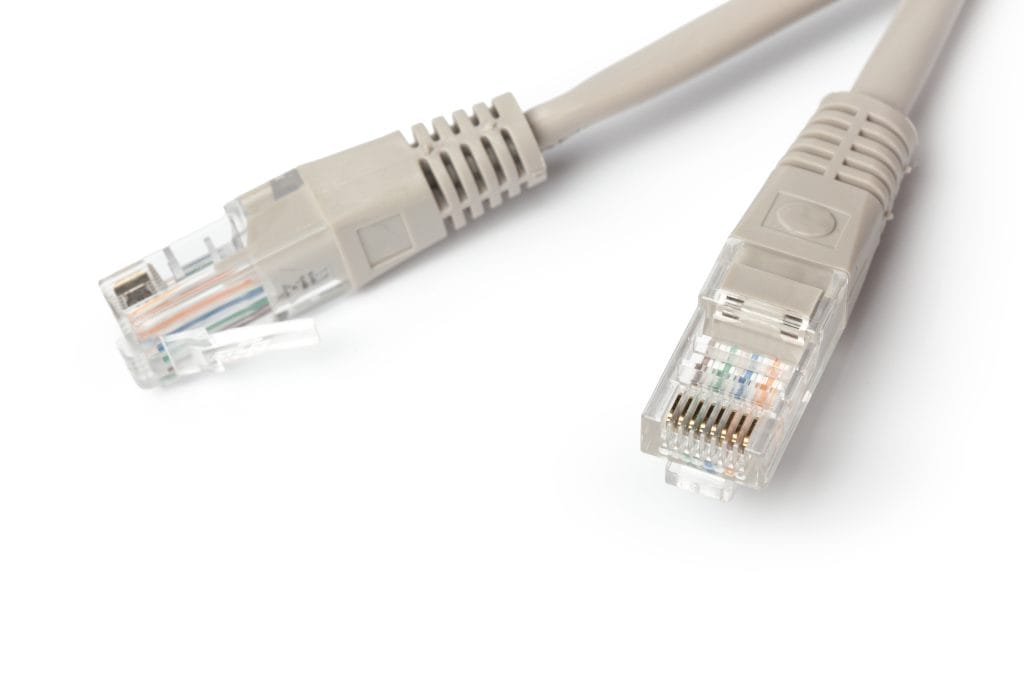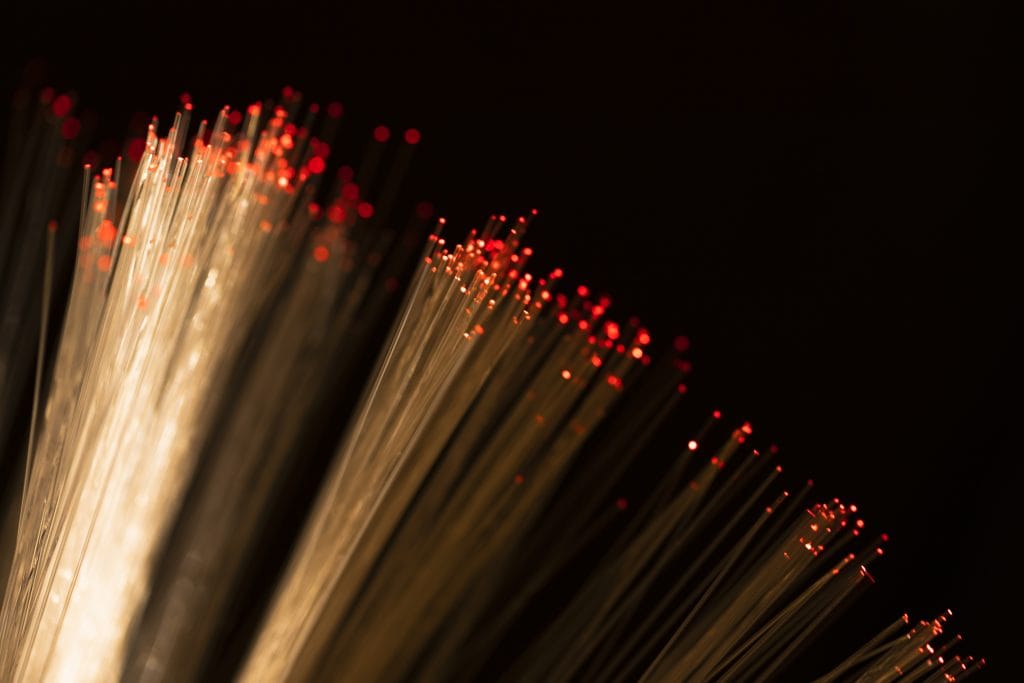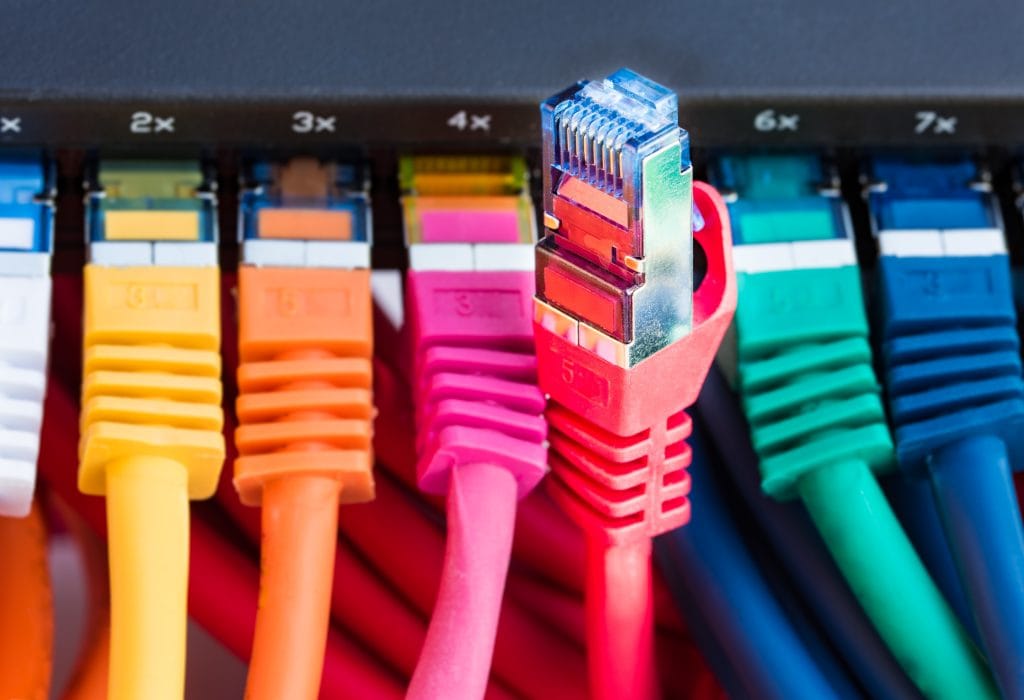The Internet is the primary communication medium for our current society and is a common way to do business. For this to work, we need access to high-speed internet to make our processes smooth and efficient, which requires the correct cables.
Your organisation can access the internet using fibre optic and Ethernet cable options. Still, you must know each cable’s properties to find the correct one for your situation.
But how do fibre optic cabling and Ethernet cables differentiate from each other? Which one does your business need?
In this blog, we discuss the different types of cables you can use and the benefits of each so you can find the right ones for your internet requirements.
What is an Ethernet Cable?

First invented in the 1970s, Ethernet cables were made in California by the Xerox Corporation’s Palo Alto Research Centre (Xerox PARC) and were made commercially available in 1980.
The Institute of Electrical and Electronics Engineers (IEEE) standardised them in 1982, enabling them to work with all computer and networking devices. These devices now have the same ports.
These cables connect devices, usually a computer, to another device in a local vicinity, often used for local area networks (LANs). They work with the Ethernet ports on most devices that allow networks or the internet, including TVs and WiFi routers.
Ethernet cables have twice as many wires as a phone cable, although the two look similar. However, the connector for a phone cable is slightly smaller. Ethernet cables also tend to be between 0.3m and 30m long, depending on what a business or home uses them for.
What are Fibre Optic Cables?

Fibre optic cables use light to transfer information. Glass fibre strands form these cables and are almost as thin as human hair. Each strand has a core at its centre, encased by cladding.
Cladding reduces signal loss reflecting light back into the core; an insulated case surrounds the fibre strands.
A fibre optic cable is the main element of supporting telecommunications, as it connects networks and transfers data over long distances.
There are several types of fibre optic cables, such as patch cords. These fibre optic cables can join different equipment because they have a connector at each end.
More information is available if you still need clarification on what fibre optic cables are.
What are the key differences between Ethernet Cables and Fibre Optics?

The main differences between these two cable types are their manufacturing and how they transmit data.
When using Ethernet cables, the transmission of data is through copper cabling. These copper wires are twisted in pairs and can have different shieldings, such as braided shielding. They transfer data using electricity.
In contrast, fibre optic cables carry beams of light through the cores in the different strands. If it is a multimode cable, they use light-emitting diodes (LEDs) to transmit data, and the light bounces down the cable. It uses a glass fibre core for data transmissions.
Advantages of Ethernet Cables

Low-cost and affordable
Ethernet cables are cheaper, making them an ideal choice for small office networks or those with more of a budget.
High-quality data transfers
Ethernet cables enable data transfers over local networks to be of high quality.
Reliable and durable
Due to its twisted copper wiring and protective foils, Ethernet cables are less likely to be physically damaged, making them a more durable cable to use.
More data security
When used in conjunction with common firewalls, this cable style can help to keep your data secure.
Disadvantages of Ethernet Cables

Intended for small, short-distance networks
Ethernet cables are only designed for local use, though different ones can operate over varying distances. A higher interference risk, such as electromagnetic interference, can accompany the longer cables.
Poor mobility
When people use Ethernet cables, their mobility is limited as they must remain close enough for the cable to reach the equipment it connects to.
Speed is affected by high levels of traffic
Whilst often transmitting data at an appropriate speed, this can lessen if there are significant traffic levels, making data transmission slower.
Troubleshooting can be more difficult
Identifying which specific node or cable is not working can be difficult, making it harder to fix issues with the network when they arise.
Less compatible with real-time/interactive applications
Ethernet cabling is non-deterministic, meaning a device is not guaranteed to receive data within a set timeframe. The non-deterministic nature means it is less compatible with real-time applications, which may suffer from delays if data does not transfer by a specific time.
Not compatible with smartphones or tablets
These cables are too large to fit into a tablet or smartphone. Instead, they use Ethernet ports, such as in computers.
Advantages of Fibre Optics

More bandwidth
Fibre optic cables have a higher capacity for transmitting data, and various cables are available with different bandwidths to suit a business’s situation and needs. Multiple uses of fibre optics can utilise this.
Typically faster speeds
Instead of using electricity, fibre optics utilise light to transmit data from one source to another. Light can travel at faster speeds than electricity, making this cable style a quicker method of data transmission. If you are using data centre solutions within your data centre, this increased speed can significantly benefit your business.
Better for long-distance transmission
Fibre optic cables can transmit data to locations farther away, with different fibre optics better suited to different distances. It is because there is less signal loss within the cable, and it has a lower risk of interference.
Flexibility
These cables are less likely to be damaged than copper wire of the same thickness as they have a higher tensile strength, which makes them a more flexible alternative.
Reduced interference
Electromagnetic interference can impact electrical signals. However, as fibre optics use light instead of electricity, there is a reduced interference risk with this cable type. There is also minimal, if any, interference between the fibre strands within the cable.
Disadvantages of Fibre Optics

Higher cost
Due to the higher production costs, fibre optic cables can be more expensive than their copper counterparts.
More fragile
The glass in these cables is more fragile than copper wiring, making them more likely to break when bent too much.
Difficult to splice
The fibres must be spliced to enlarge a fibre optic network or implement a new one. If this does not happen properly, it can cause disruptions in the network. However, splicing is challenging as issues can arise if fibres are insufficiently connected.
Can be difficult to install
When installed, this cable is easier to break or damage because of its size and compact nature, so there is a greater chance of needing new fibre optic cables or a different type.
When using cables within your business or home, you must find the correct one to suit your needs and budget. Contact us today and see how we can help you with your cabling questions.


